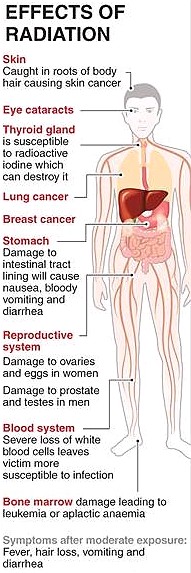welcome
|
|
FUKUSHIMAA WORLD CRISISMILLIONS - BILLIONS DOOMED
‘The mainstream media, world governments, nuclear agencies, health organizations, weather reporters, and the health care industry has completely ignored three ongoing triple meltdowns that have never been contained’ RT: Finally, what is the worst case scenario? What level of contamination are we looking at and how dire would the consequences be for the long-term health of the region? CC: Extremely dire. This is a terrible answer to have to give, but the worst case scenario could play out in death to billions of people. -- > [Full article can be found below]
Fukushima's 10th Anniversary
Welcome to New World Next Week - the video series from Corbett Report and Media Monarchy that covers some of the most important developments in open source intelligence news. This week:
Fukushima Daiichi Nuclear Plant
Articles and Videos
"Nearly 300 Tons of Radioactive
Water is Dumped in the Pacific Ocean Radiation at Fukushima nuclear plant at unimaginable levels Published on Feb 8, 2017 Adam Housley reports from Los Angeles "It Will Take at Least 300 Billion Dollars and 4 Decades to Finally Fix This Area"
"UNPRECEDENTED CATASTROPHE" Radiation at Fukushima at highest level since meltdown Published on Feb 6, 2017 Radiation levels at one of Fukushima’s power stations is at its highest level since the tsunami-triggered meltdown almost six years ago, TEPCO reports. Safely dismantling the plant will prove an enormous challenge and is made even more difficult by this discovery. Radioactive waste monitor Kevin Kamps, of Beyond Nuclear, joins RT America’s Simone Del Rosario to explain the details of this ongoing catastrophe. Find RT America in your area: http://rt.com/where-to-watch/
Back to
Fukushima
In March 2011, an earthquake hit Japan, setting off a tsunami that caused an accident at the Daiichi nuclear power station in Fukushima prefecture. Radioactive contamination settled on the surrounding area, and the authorities decided to evacuate the population living within a 20km radius around the power station.
Eight years later, inhabitants of the town closest to the nuclear disaster, Okuma, were allowed to move back to some of its territory. RTD takes a bittersweet tour of the nuclear ghost town with former residents considering whether to return to their hometown, and meets those who have already moved into new homes built in a less-contaminated part of town. Torn between loyalty to their roots and the desire to build a future for themselves, the people of Fukushima now have an agonising choice to make.
------------
Fukushima Radiation Apocalypse Published on Feb 7, 2017 As The Guardian reports, radiation levels have reach what experts call an “unimaginable” intensity inside the containment structure of reactor No. 2, clocking in at 530 sieverts per hour. The melted fuel rods which are generating this radiation have apparently bored a hole through the floor of the containment vessel, meaning they may be very close to coming into contact with ground water or ocean water (or may have already struck it). Yet nearly the entire mainstream media remains in a complete news blackout over this devastating development that threatens the sustainability of all life in the Northern hemisphere. Stay informed at :
SOME BACKGROUND
World in Danger The Fukushima-California Connection w/ Arnie Gundersen Published on Jun 10, 2016 World in Danger - Arnie Gundersen https://youtu.be/Fm6X3zdZZVM The Fukushima California Connection also see: World in Danger: the Fukushima-California Connection https://youtu.be/HWZIGHv3khE Arnie Gundersen is Chief Nuclear Engineer at Fairewinds Energy Education.
The World Health Organization provides public health recommendations about the use of pharmacologic drugs and vaccines and provides guidelines and assistance in public health emergencies. When it was founded in 1948, the WHO relied on funding from its member states; their contributions were assessed based on their national income and population. The funds were not earmarked for any particular policy. In those days, the WHO was an independent organization. But over time, the WHO leadership traded its independence and with it, its integrity, for big money. In 1988, Halfdan Mahler, Director General of the WHO from 1973 to 1988, warned the world against the power wielded by the pharmaceutical industry over the WHO. He stated, in the Danish daily newspaper (Politiken): “this industry is taking over WHO”. Unfortunately, no one at that time believed him.[1] The take-over intensified; with Big Pharma dictating global public health policies that the WHO initiates and promotes. Those policies have vastly enriched Big Pharma, and the WHO has been generously rewarded for its service. Currently, 80% of the WHO budget relies on earmarked donations; primarily from the U.S. government, the Bill and Melinda Gates Foundation, and Big Pharma. The WHO revenue in 2016-2017 was $5, 139 Billion, of which only $927 million came from assessed contributions by member states; these “core” funds cover the WHO’s general expenses. By contrast, $4,422 Billion were provided by major donors; and these funds are earmarked for activities that serve the donor’s financial interests. These major donors dictate and control the WHO policies, ensuring that WHO policies further their interests. [2] The WHO, it should be noted, is not accountable to public scrutiny – as non-profits are. The internal documents of the WHO are not available under Freedom of Information, and most of the WHO’s financial contracts are secret. In essence, the WHO became a vassal of, and the global marketing agent for Big Pharma and its aggressive drug and vaccine market expansion agenda. Time and again, the WHO has demonstrated its allegiance to its financial backers; adopting that have vastly enriched Pharma – even as the widespread, use – and misuse – of multi-drug cocktails and multi-virus vaccines – have caused epidemic number of serious adverse side-effects, hospitalizations, chronic illnesses, and deaths. [3] During Margaret Chan’s tenure, Bill Gates has had a disproportionate influence over the WHO; his foundation has contributed more than $2.4 billion, while member countries have grown reluctant to put their money into the agency, especially after the 2008 global financial crisis. Bill Gates has been labeled by some as “the world’s most powerful doctor”. Excerpt from: Anatomy of Corruption: WHO Public Health Guidelines, by Alliance For Human Research Protection
RonPaulLibertyReport | Mar 18, 2020 Link: World Health Organization
Dangerous Operation at Fukushima's Reactor No. 4
Could Ignite "Atomic Chain Reaction"
Shut All Nuclear Power Says Former NRC Chair Spent reactor fuel, containing roughly 85 times more long-lived radioactivity than released
at Chernobyl, still sits in pools vulnerable to earthquakes. And what of our own nuclear power plants? The largest
storage pools in the country are located in a heavily populated area at a reactor complex, Shearon Harris, just
outside Raleigh, NC transported from other reactors by rail through high population centers on the East Coast. A
report from scientists at MIT and Princeton warned that...
Old Nuclear Plants? No Problem, Just Extend The License
Plants are beginning to close down as many reach 40 years of age. But others are having their
license extended for decades with little public awareness or examination
Fukushima apocalypse: Years of ‘duct tape fixes’ could result in ‘millions of deaths’
rt.com
Even the tiniest mistake during an operation to extract over 1,300 fuel rods at the crippled Fukushima nuclear power plant in Japan could lead to a series of cascading failures with an apocalyptic outcome, fallout researcher Christina Consolo told RT. Fukushima operator TEPCO wants to extract 400 tons worth of spent fuel rods stored in a pool at the plant’s damaged Reactor No. 4. The removal would have to be done manually from the top store of the damaged building in the radiation-contaminated environment. In the worst-case scenario, a mishandled rod may go critical, resulting in an above-ground meltdown releasing radioactive fallout with no way to stop it, said Consolo, who is the founder and host of Nuked Radio. But leaving the things as they are is not an option, because statistical risk of a similarly bad outcome increases every day, she said. RT: How serious is the fuel rod situation compared to the danger of contaminated water build-up which we already know about? Christina Consolo: Although fuel rod removal happens on a daily basis at the 430+ nuclear sites around the world, it is a very delicate procedure even under the best of circumstances. What makes fuel removal at Fukushima so dangerous and complex is that it will be attempted on a fuel pool whose integrity has been severely compromised. However, it must be attempted as Reactor 4 has the most significant problems structurally, and this pool is on the top floor of the building. There are numerous other reasons that this will be a dangerous undertaking. - The racks inside the pool that contain this fuel were damaged by the explosion in the early days of the accident. - Zirconium cladding which encased the rods burned when water levels dropped, but to what extent the rods have been damaged is not known, and probably won’t be until removal is attempted. - Saltwater cooling has caused corrosion of the pool walls, and probably the fuel rods and racks. - The building is sinking. - The cranes that normally lift the fuel were destroyed. - Computer-guided removal will not be possible; everything will have to be done manually. - TEPCO cannot attempt this process without humans, which will manage this enormous task while being bombarded with radiation during the extraction and casking. - The process of removing each rod will have to be repeated over 1,300 times without incident. - Moving damaged nuclear fuel under such complex conditions could result in a criticality if the rods come into close proximity to one another, which would then set off a chain reaction that cannot be stopped. What could potentially happen is the contents of the pool could burn and/or explode, and the entire structure sustain further damage or collapse. This chain reaction process could be self-sustaining and go on for a long time. This is the apocalyptic scenario in a nutshell. The water build-up is an extraordinarily difficult problem in and of itself, and as anyone with a leaky basement knows, water always ‘finds a way.’
‘Trivial in light of other problems at Fukushima, water situation could culminate in the chain reaction scenario’
At Fukushima, they are dealing with massive amounts of groundwater that flow through the property, and the endless pouring that must be kept up 24/7/365 to keep things from getting worse. Recently there appears to be subsidence issues and liquefaction under the plant. TEPCO has decided to pump the water out of these buildings. However, pumping water out of the buildings is only going to increase the flow rate and create more of these ground issues around the reactors. An enormous undertaking – but one that needs to be considered for long-term preservation of the integrity of the site – is channelling the water away, like a drain tile installed around the perimeter of a house with a leaky basement, but on an epic scale. Without this effort, the soils will further deteriorate, structural shift will occur, and subsequently the contents of the pools will shift too. Any water that flows into those buildings also becomes highly radioactive, as it is likely coming into contact with melted fuel. Without knowing the extent of the current liquefaction and its location, the location of the melted fuel, how long TEPCO has been pumping out water, or when the next earthquake will hit, it is impossible to predict how soon this could occur from the water problem/subsidence issue alone. But undoubtedly, pumping water out of the buildings is just encouraging the flow, and this water problem needs to be remedied and redirected as soon as possible. RT: Given all the complications that could arise with extracting the fuel rods, which are the most serious, in your opinion? CC: The most serious complication would be anything that leads to a nuclear chain reaction. And as outlined above, there are many different ways this could occur. In a fuel pool containing damaged rods and racks, it could potentially start up on its own at anytime. TEPCO has been incredibly lucky that this hasn’t happened so far.
‘One of the worst, but most important jobs anyone has ever had to do’
My second biggest concern would be the physical and mental fitness of the workers that will be in such close proximity to exposed fuel during this extraction process. They will be the ones guiding this operation, and will need to be in the highest state of alertness to have any chance at all of executing this plan manually and successfully. Many of their senses, most importantly eyesight, will be hindered by the apparatus that will need to be worn during their exposure, to prevent immediate death from lifting compromised fuel rods out of the pool and placing them in casks, or in the common spent fuel pool located a short distance away. Think for a moment what that might be like through the eyes of one of these workers; it will be hot, uncomfortable, your senses shielded, and you would be filled with anxiety. You are standing on a building that is close to collapse. Even with the strongest protection possible, workers will have to be removed and replaced often. So you don’t have the benefit of doing such a critical task and knowing and trusting your comrades, as they will frequently have to be replaced when their radiation dose limits are reached. If they exhibit physical or mental signs of radiation exposure, they will have be replaced more often. It will be one of the worst, but most important jobs anyone has ever had to do. And even if executed flawlessly, there are still many things that could go wrong. RT: How do the potential consequences of failure to ensure safe extraction compare to other disasters of the sort – like Chernobyl, or the 2011 Fukushima meltdown? CC: There really is no comparison. This will be an incredibly risky operation, in the presence of an enormous amount of nuclear material in close proximity. And as we have seen in the past, one seemingly innocuous failure at the site often translates into a series of cascading failures.
‘The site has been propped up with duct tape and a kick-stand for over two years’
Many of their ‘fixes’ are only temporary, as there are so many issues to address, and cost always seems to be an enormous factor in what gets implemented and what doesn’t. As a comparison: Chernobyl was one reactor, in a rural area, a quarter of the size of one of the reactors at Fukushima. There was no ‘spent fuel pool’ to worry about. Chernobyl was treated in-situ…meaning everything was pretty much left where it was while the effort to contain it was made (and very expeditiously I might add) not only above ground, but below ground. At Fukushima, we have six top-floor pools all loaded with fuel that eventually will have to be removed, the most important being Reactor 4, although Reactor 3 is in pretty bad shape too. Spent fuel pools were never intended for long-term storage, they were only to assist short-term movement of fuel. Using them as a long-term storage pool is a huge mistake that has become an ‘acceptable’ practice and repeated at every reactor site worldwide. We have three 100-ton melted fuel blobs underground, but where exactly they are located, no one knows. Whatever ‘barriers’ TEPCO has put in place so far have failed. Efforts to decontaminate radioactive water have failed. Robots have failed. Camera equipment and temperature gauges…failed. Decontamination of surrounding cities has failed.
‘If and when the corium reaches the Tokyo aquifer, serious and expedient discussions will have to take place about evacuating 40 million people’
We have endless releases into the Pacific Ocean that will be ongoing for not only our lifetimes, but our children’s’ lifetimes. We have 40 million people living in the Tokyo area nearby. We have continued releases from the underground corium that reminds us it is there occasionally with steam events and huge increases in radiation levels. Across the Pacific, we have at least two peer-reviewed scientific studies so far that have already provided evidence of increased mortality in North America, and thyroid problems in infants on the west coast states from our initial exposures. We have increasing contamination of the food chain, through bioaccumulation and biomagnification. And a newly stated concern is the proximity of melted fuel in relation to the Tokyo aquifer that extends under the plant. If and when the corium reaches the Tokyo aquifer, serious and expedient discussions will have to take place about evacuating 40 million people from the greater metropolitan area. As impossible as this sounds, you cannot live in an area which does not have access to safe water. The operation to begin removing fuel from such a severely damaged pool has never been attempted before. The rods are unwieldy and very heavy, each one weighing two-thirds of a ton. But it has to be done, unless there is some way to encase the entire building in concrete with the pool as it is. I don’t know of anyone discussing that option, but it would seem much ‘safer’ than what they are about to attempt…but not without its own set of risks. And all this collateral damage will continue for decades, if not centuries, even if things stay exactly the way they are now. But that is unlikely, as bad things happen like natural disasters and deterioration with time…earthquakes, subsidence, and corrosion, to name a few. Every day that goes by, the statistical risk increases for this apocalyptic scenario. No one can say or know how this will play out, except that millions of people will probably die even if things stay exactly as they are, and billions could die if things get any worse. RT: Are the fuel rods in danger of falling victim to other factors, while the extraction process is ongoing? After all, it’s expected to take years before all 1,300+ rods are pulled out. CC: Unfortunately yes, the fuel rods are in danger every day they remain in the pool. The more variables you add to this equation, and the more time that passes, the more risk you are exposed to. Each reactor and spent fuel pool has its own set of problems, and critical failure with any of them could ultimately have the end result of an above-ground, self-sustaining nuclear reaction. It will not be known if extraction of all the fuel will even be possible, as some of it may be severely damaged, until the attempt is made to remove it. RT: Finally, what is the worst case scenario? What level of contamination are we looking at and how dire would the consequences be for the long-term health of the region? CC: Extremely dire. This is a terrible answer to have to give, but the worst case scenario could play out in death to billions of people. A true apocalypse. Since we have been discussing Reactor 4, I’ll stick to that problem in particular, but also understand that a weather event, power outage, earthquake, tsunami, cooling system failure, or explosion and fire in any way, shape, or form, at any location on the Fukushima site, could cascade into an event of that magnitude as well. ‘Once the integrity of the pool is compromised that will lead to more criticalities’ At any time, following any of these possible events, or even all by itself, nuclear fuel in reactor 4′s pool could become critical, mostly because it will heat up the pool to a point where water will burn off and the zirconium cladding will catch fire when it is exposed to air. This already happened at least once in this pool that we are aware of. It almost happened again recently after a rodent took out an electrical line and cooling was stopped for days. Once the integrity of the pool is compromised that will likely lead to more criticalities, which then can spread to other fuel. The heat from this reaction would weaken the structure further, which could then collapse and the contents of the pool end up in a pile of rubble on the ground. This would release an enormous amount of radioactivity, which Arnie Gundersen has referred to as a “Gamma Shine Event” without precedence, and Dr. Christopher Busby has deemed an “Open-air super reactor spectacular.” This would preclude anyone from not only being at Reactor 4, but at Reactors 1, 2, 3, 5, 6, the associated pools for each, and the common spent fuel pool. Humans could no longer monitor and continue cooling operations at any of the reactors and pools, thus putting the entire site at risk for a massive radioactive release. ‘At least the northern half of Japan would be uninhabitable, and some researchers have argued that it already is’
Mathematically, it is almost impossible to quantify in terms of resulting contamination, and a separate math problem would need to be performed for every nuclear element contained within the fuel, and whether or not that fuel exploded, burned, fissioned, melted, or was doused with water to try to cool it off and poured into the ocean afterward. Some researchers have even ventured to say that other nuke plants on the east coast of Honshu may need to be evacuated if levels get too high, which will lead to subsequent failures/fires and explosions at these plants as well. Just how profound the effect will be on down-winders in North America, or the entire northern hemisphere for that matter, will literally depend on where the wind blows and where the rain falls, the duration and extent of a nuclear fire or chain-reaction event, and whether or not that reaction becomes self-sustaining. At least the northern half of Japan would be uninhabitable, and some researchers have argued that it already is. This is already happening to the nuclear fuel in the ground under the plant, but now it would be happening above ground as well. There is no example historically to draw from on a scale of this magnitude. Everything is theory. But anyone who says this can’t happen is not being truthful, because nobody really knows how bad things could get. The most disturbing part of all of this is that Fukushima has been this dangerous, and precarious, since the second week of March 2011. The ante will definitely be upped once the fuel removal starts. ‘The mainstream media, world governments, nuclear agencies, health organizations, weather reporters, and the health care industry has completely ignored three ongoing triple meltdowns that have never been contained’
An obvious attempt to downplay this disaster and its consequences have been repeated over and over again from ‘experts’ in the nuclear industry that also have a vested interest in their industry remaining intact. And, there has been a lot of misleading information released by TEPCO, which an hour or two of reading by a diligent reporter would have uncovered, in particular the definition of ‘cold shutdown.’ Over 300 mainstream news outlets worldwide ran the erroneous ‘cold shutdown’ story repeatedly, which couldn’t be further from the truth…[it was] yet another lie that was spun by TEPCO to placate the public, and perpetuated endlessly by the media and nuclear lobby. Unfortunately, TEPCO waited until a severe emergency arose to finally report how bad things really are with this latest groundwater issue…if we are even being told the truth. Historically, everything TEPCO says always turns out to be much worse than they initially admit. ‘Unfortunately there is no one better qualified to deal with this than the Russians, despite their own shortcomings’
I think the best chance of success is…that experts around the world drop everything they are doing to work on this problem, and have Russia either lead the containment effort or consult with them closely. They have the most experience, they have decades of data. They took their accident seriously and made a Herculean effort to contain it. Of course we also know the Chernobyl accident was wrought with deception and lies as well, and some of that continues to this day, especially in terms of the ongoing health effects of children in the region, and monstrous birth defects. Unfortunately there is no one better qualified to deal with this than the Russians, despite their own shortcomings. Gorbachev tried to make up for his part in the cover-up of Chernobyl by opening orphanages throughout the region to deal with the affected children. But as far as Fukushima goes, the only thing that matters now is if world leaders and experts join forces to help fix this situation. Regardless of what agendas they are trying to protect or hide, how much it will cost, the effect on Japan or the world’s economy, or what political chains this will yank. The nuclear industry needs to come clean. If this leads to every reactor in the world being shut down, so be it. If the world governments truly care about their people and this planet, this is what needs to be done. Renowned theoretical physicist Michio Kaku stated in an interview a few weeks after the initial accident that “TEPCO is literally hanging on by their fingernails.” They still are, and always have been. The Japanese have proven time and time again they are not capable of handling this disaster. Now we are entrusting them to execute the most dangerous fuel removal in history. We are extremely lucky that this apocalyptic scenario hasn’t happened yet, considering the state of Reactor 4. But for many, it is already too late. The initial explosions and spent fuel pool fires may have already sealed the fate of millions of people. Time will tell. Anyone who tells you otherwise is not being honest, because there is just no way to know. This article was posted: Sunday, August 18, 2013 at 10:05 am
Brainwashing Campaign: "Radiation Doesn't Affect People who are Smiling" If You Smile Radiation Won't Kill You Brainwashing Campaign: "Radiation Doesn't Affect People who are Smiling"
The Coming Fukushima Global Disaster with Dr. Christopher Busby "New Leaks" have been discovered, 240 megatons of potentially explosive radioactive material on
site, mutations of local plants and wild life, etc.
“Tepco Has Lost Control” – What Is Really Happening At Fukushima In Four Charts
zerohedge.com After a self-imposed gag order by the mainstream media on any coverage of the Fukushima disaster (ostensibly the last thing the irradiated Japanese citizens needed is reading beyond the lies of their benevolent government, and TEPCO, and finding out just how bad the reality is especially since the key driver behind Abenomics is a return in confidence at all costs), the biggest nuclear catastrophe in history is once again receiving the attention it deserves. This follows the recent admission by TEPCO of the biggest leak reported at Fukushima to date, which forced the Japanese government to raise the assessment of Fukushima from Level 1 to Level 3, even though this is merely the catalyst of what has been a long and drawn out process in which Tepco has tried everything it could to contain the fallout from the exploded NPP, and failed. And today, in a startling and realistic assessment of Fukushima two and a half years after the explosion, the WSJ finally tells the truth: “Tepco Has Lost Control.” Here is how the mainstream media, in this case the Wall Street Journal, catches up with a topic covered extensively in the “alternative” media for the past several years:
What does “losing control” mean in practical terms?
The last statement bears repeating: “it is still not clear where the melted fuel cores are.” Well as long as TEPCO is 100% confident there are no uncontrolled chain reactions taking place… Then again hundreds of tons of coolant must be cooling something.
Indeed the “worst-case scenario” is an appropriate topic because as covered here over the weekend, it involves the potential death of millions of largely oblivious Japanese citizens. As for the long overdue mea culpa by a nationalized TEPCO, which also speaks for the entire Japanese government, it sounds hollow at best and makes one wonder what else is left unsaid.
The concerns are piling up. Earlier today Reuters reported that TEPCO “admitted to new spots of high radiation had been found near storage tanks holding highly contaminated water, raising fear of fresh leaks as the disaster goes from bad to worse.”
The bottom line, and what has become painfully clear, is that Japan simply can’t fix the problem. Even China has now figured it out.
What is strangest of all is that the Japanese people are far less concerned about the government’s cover up. Oh well: they have their distractions – like a plunging currency, and (transitorily) soaring stock market, in nominal terms of course. Finally the following four charts from the WSJ provide a full breakdown of the current state of play at the devastated nuclear power plant.
Full interactive charts can be found here This article was posted: Thursday, August 22, 2013 at 12:25 pm
Fukushima in freefall: radioactive water filters taken offline, Tepco in desperation as leaks just won't stop
Learn More : http://www.naturalnews.com/041800_Fukushima_radiation_leaks_desperation.html#ixzz2dAsXHOOZ (NaturalNews) After a 29-month cover-up, the Tokyo Electric Power Co (Tepco) is now calling
for international help and has all but admitted Fukushima's radiation leaks are spiraling out of control. In
addition to the leaking water storage units that are unleashing hundreds of tons of radioactive water each day,
Tepco now says 50% of its contaminated water filtration capability has been taken offline due to corrosion. 27 families file suit against TEPCOThe problem with denial in the face of a world-class radiation disaster is that sooner or later
the body bags start to pile up. Now, 74 people from 27 families are filing suit in the Osaka District Court,
seeking 15 million Yen each for psychological and physical damage. (And they are the lucky ones who are still
living.) Fishing ban reinstatedPart of the Fukushima denial was the claim that fish were somehow not being irradiated by the
numerous leaks of highly radioactive water. This cover-up was further enforced by lifting a fishing ban that had
been announced in the days following the original Fukushima meltdown event in 2011. Zeolites to the rescue?In desperation, Tepco is now trying to figure out how to stop thousands of tons of radioactive
water from leaking into groundwater supplies (and ultimately into the ocean). Tepco answers to no oneTepco "...does not directly answer to any regulatory bodies, including the country's nuclear
watchdog," reports CTV. Sounds a lot like Big Pharma and the FDA, doesn't it? Industry is running the
regulators. Whack-a-Mole!Finally acknowledging over two years of utter bureaucratic failure and delusional propaganda, the
Japanese government is now taking over the Fukushima cleanup effort. Today, Trade Minister Toshimitsu Motegi told
the international press, "We've allowed Tokyo Electric to deal with the contaminated water situation on its own and
they've essentially turned it into a game of 'Whack-a-Mole,'" reports Business
Week
Top Scientist: Another Fukushima Quake Would Mean US Evacuation, ‘Bye Bye Japan’ Award winning scientist says another 7.0 earthquake hitting Fukushima would mean US evacuations, ‘bye bye Japan’. Anthony Gucciardi Award winning scientist David Suzuki has gone on record in a public talk posted online just days ago in saying that in the event of another seven or above earthquake, which he says has about a 95% chance of occurring over the next three years, it would mean a complete evacuation of North America and ‘bye bye Japan’.
“I have seen a paper which says that if in fact the fourth plant goes under in an earthquake and those rods are exposed, it’s bye bye Japan and everybody on the west coast of North America should evacuate,” he said. As a recipient of 16 significant academic awards and a host of the popular CBC Television program entitled ‘The Nature of Things’, Suzuki was a headline speaker at the ”Letting in the Light” scientific symposium that was focused around water ecology at the University of Alberta. But instead of simply discussing marine or freshwater ecosystems, Suzuki began issuing a very serious warning regarding the future of Fukushima and its overall predicted consequences for the entire planet. Specifically speaking to the nature of Fukushima’s ticking time bomb, Suzuki began the breakdown of the plant’s numerous threats with stating the very real concept that Fukushima is perhaps the largest threat to both humanity and the planet that we face in the immediate future. “Fukushima is the most terrifying situation I can imagine,” he said before delving into the issue. ”Three out of the four plants were destroyed in the earthquake and in the tsunami. The fourth one has been so badly damaged that the fear is, if there’s another earthquake of a seven or above that, that building will go and then all hell breaks loose… And the probability of a seven or above earthquake in the next three years is over 95 per cent.” And it’s that 95% chance of another seven or above earthquake within the next three years that signals a completely dark scenario. But, as right as Suzuki is on this entire issue, he is also forgetting of another threat — TEPCO’s mission to launch their cleanup operation of the Fukushima site. Specifically, their move to begin the extraction of fuel rods from the fourth reactor at the plant as early as the middle of this month. It is here where we also see yet another looming danger in regards to the cleanup process that is expected to ultimately take decades: the possibility of two rods colliding and generating a massive release of radiation as a result. Experts like Dr Helen Caldicott have spoken to the media on this subject in the past, stating that: “Two rods could touch each other in this process which has been done before and there could be a fission reaction and a very large release of radiation.” Ultimately, the fact of the matter is that the Fukushima plant is teetering on the equivalent of nuclear life support, and the notoriously incompetent plant operators at TEPCO are about to go in and perform surgery. In the event that Suzuki is right, and another earthquake hits within the next three years before TEPCO is able to perform a cleanup (which may very well be even more dangerous) and leads to a complete meltdown, it would absolutely lead to a radioactive disaster internationally — well beyond the United States. But don’t count on your government health bodies to inform you of the risk, or even tell you how you can better
prepare yourself. Instead, they will likely once again start shutting off their radiation counters and raising the
allowable limits of radiation in the food supply. For now, it is up to us to prepare ourselves and our family —
making an effort also to also spread the word and call on the public to demand action be taken in Fukushima under
the guidance of top independent scientists. Anthony Gucciardi is the acting Editor and Founder of alternative news website Storyleak.com, as well as the Founder of the third largest natural health website in the world, NaturalSociety.com. He is also a news media personality and analyst who has been featured on top news, radio, and television organizations including Drudge Report, Michael Savage’s Savage Nation, Coast to Coast AM, and RT. This article was posted: Wednesday, November 6, 2013 at 2:48 pm Tags: david suzuki, earthquake, Fukushima, japan, radiation, tepco
'Fukushima beyond tragic, it's a crime' A nuclear clean-up team in Fukushima is preparing to move the fuel rods from one of the power plant's reactors to a safer location. It's the most hazardous undertaking at the Japanese facility since it was crippled by an earthquake and tsunami, two and a half years ago. To discuss the clean-up procedures as well as the safety situation around the Fukushima power plant, Kevin Kamps, a nuclear waste specialist for the Beyond Nuclear Organization, joins RT.
http://www.infowars.com/fukushima-is-here/
Radiation Levels Have Increased in North America
After detailing the purchase of 14 million radiation fighting potassium iodide pills on behalf of The United States Department of Health and Human Services in what amounted to a ‘bizarre preparation purchase’ as revealed to me by my source, I decided in typical investigative fashion to call up the DHHS purchasing agent listed on the Fed Biz Opps website and ask about the acquisition of the 14 million iodide doses. Before I was able to delve into the issue, however, the federal employee (a true ‘public servant’) hung up on me following a brief ‘goodbye’. You can watch the video in full, which I recorded over at the Infowars studios:
Study: Dead sea creatures cover 98 percent of ocean floor off California coast; up from 1 percent before Fukushima
Thursday, January 02, 2014 by: Ethan A. Huff, staff writer (NaturalNews) The Pacific Ocean appears to be dying, according to a new study recently published in the journal Proceedings of the National Academy of Sciences. Scientists from the Monterey Bay Aquarium Research Institute (MBARI) in California recently discovered that the number of dead sea creatures blanketing the floor of the Pacific is higher than it has ever been in the 24 years that monitoring has taken place, a phenomenon that the data suggests is a direct consequence of nuclear fallout from Fukushima.
"In the 24 years of this study, the past two years have been the biggest amounts of this detritus by far," stated Christine Huffard, a marine biologist at MBARI and leader of the study, to National Geographic. At an ocean research station known as Station M, located 145 miles out to sea between the Californian cities of Santa Barbara and Monterey, Huffard and her colleague Ken Smith observed a sharp uptick in the amount of dead sea life drifting to the ocean floor. The masses of dead sea plankton, jellyfish, feces and other oceanic matter that typically only cover about 1 percent of the ocean floor were found to now be covering about 98 percent of it -- and multiple other stations located throughout the Pacific have since reported similar figures. "In March 2012, less than one percent of the seafloor beneath Station M was covered in dead sea salps," writes Carrie Arnold for National Geographic. "By July 1, more than 98 percent of it was covered in the decomposing organisms. ... The major increase in activity of deep-sea life in 2011 and 2012 weren't limit to Station M, though: Other ocean-research stations reported similar data." No more sea life means no more oxygen in our atmosphere "Forget looking at global warming as the culprit," writes National Geographic commenter "Grammy," pointing out the lunacy of Arnold's implication that the now-debunked global warming myth was the sudden cause of a 9,700 percent increase in dead sea life. Backing her up, another National Geographic commenter jokingly stated that somehow "the earth took such a huge hit in a four-month timeframe of a meltdown via global warming and we as a people didn't recognize this while [it was] happening; while coincidentally during that same time frame the event at Fukushima took place." It is almost as if the powers that be want us all to forget about Fukushima and the catastrophic damage it continues to cause to our planet. But they will not be able to cover up the truth forever, as human life is dependent upon healthy oceans, the life of which provides the oxygen that we all need to breathe and survive. Sources for this article include: http://newswatch.nationalgeographic.com http://science.naturalnews.com http://science.naturalnews.com http://science.naturalnews.com http://www.naturalnews.com/043380_fukushima_radiation_ocean_life.html
Mainstream Media Downplays Radiation Dangers To Pacify Public http://www.infowars.com/oregon-locals...
Media Hides Fukushima Statistics Alex welcomes to the studio Infowars camera men Josh Owens and Glynn Trolz to discuss their
experiences in California while they were investigating the wave of radiation striking the West Coast of the United
States.
Horror: US Sailor and Fukushima First Responder Now In Living Hell US Navyman Steve Simmons was one of the sailor's involved in Fukushima decontamination operations. He summarize the debilitating health effects he and others have experienced immediately following the cleanup and how the government may be covering up their injuries. LINK : U.S. Military Killing Its Own Troops!
NAVY Sailor Reveals Gruesome Radiation Injuries US Navyman Steve Simmons was one of the sailor's involved in Fukushima decontamination
operations. He summarize the debilitating health effects he and others have experienced immediately following the
cleanup and how the government may be covering up their injuries. His story is sad and his government failed to
warn him of the dangers. LINK : U.S. Military Killing Its Own Troops!
Fukushima Clean Up With Scientist Jerry Petermann Alex welcomes to the show scientist Jerry Petermann who talks about the dangers of Fukushima
radiation. http://www.fukushimaupdatereport.com/
Need to Know: Radiation and Risk Nuclear Scientist J.W. Petermann of FukushimaUpdateReport.com evaluates the hazards of EMF
radiation vs ionizing radiation, and the risks of the nuclear industry as a whole.
Gundersen: New Report Shows 50 tons Of Rubble Fell In Unit 3 Pool, "Removal of Fuel Cannot Exist" TEPCO released a report entitled, TEPCO's Fukushima Nuclear Power Plant Roadmap, that
contained some astounding information regarding Unit 3. Follow Fairewinds Energy's Arnie Gundersen as he shows you
the 35-ton refueling bridge that fell in the Unit 3 spent fuel pool during the Unit 3 detonation explosion. Do the
math. The bottom line here is that TEPCO has just acknowledged that at least 50-tons of rubble has fallen on top of
and into the spent fuel pool in Unit 3. What does this 50-ton pile of debris mean to the Unit 3 spent fuel pool and
its cleanup?
Scientists Drastically Underestimated Amount of Fukushima Radiation Worldwide Fukushima Radiation Has Spread Worldwide
by Washington's Blog | August 29, 2014 We noted 2 days after the Japanese earthquake that radiation from Fukushima could end up on the West Coast of North America. And see this. We started tracking the radioactive cesium released by Fukushima within weeks of the accident. In fact, U.S. nuclear authorities were extremely worried about west coast getting hit by Fukushima radiation … but publicly said it was safe. We reported that Fukushima radiation spread worldwide. And we’ve documented for years that the failure to test the potentially high levels of radiation hitting North America is a scandal. Sadly, we were right to be worried … The Journal Environmental Science & Technology – published by the American Chemical Society –reported last year that airborne levels of radioactive cesium were raised by 100 to 1,000 times (what scientists describe as two to three “orders of magnitude“):
Indeed, even hot particles and nuclear core fragments from Fukushima were found to have traveled all the way to Europe. The French government radiation agency – IRSN – released a video of Fukushima cesium hitting the West Coast of North America. EneNews displays a screenshot from the IRSN video, and quantifies the extreme cesium spikes:
Levels on the West Coast were up to 500 times higher than estimated. Cesium levels from Fukushima were higher than expected worldwide, including in the arctic region of Europe. Radioactive cesium bioaccumulates in large fish and animals. The radioactive half life of cesium 137 is usually 30 years. But scientists at the Savannah River National Laboratory say that the cesium at Chernobyl will persist in the environment between 5 and 10 times longer – between 180 and 320 years. And the Fukushima accident has pumped out some entirely new forms of radioactive materials … in “glassy spheres“, buckyballs, ball-like spheres, and bound to organic matter. Scientists don’t really know how long these new forms will last …
Massive Radiation Discovered: At Tokyo Playground Published on Apr 27, 2015
When a specially-designed robot dies within 3
hours of being exposed to Fukushima’s radiation, it is clear something is not quite as propagandized in Japan; and
today, as SCMP reports, extremely high levels of radiation have been discovered in a children’s playground in
Tokyo. While two hours of exposure to a child would be equivalent to the maximum does allowable in a year,
Japaneseofficials say they do not think it is connected to the disaster at Fukushima. We are not sure whether that
is supposed to reassure or terrorize locals? http://www.infowars.com/2000x-normal-... Help us spread the word about the liberty movement, we're reaching millions help us reach millions more. we all want liberty. Find the free live feed at http://www.infowars.com/watch-alex-jo...
Special Report: Radiation & the Universe Many nuclear reactors sit on fault lines or on shores at risk for tsunamis by Infowars.com | July 12, 2014
Many of the thousands of nuclear reactors in the world today were built on fault lines and ocean shores at risk for tsunamis, like Fukushima in Japan for example. More than 90% of the reactors are also leaking but industry groups do not seem to care, even though too much radiation and the wrong types of radiation can lead to accelerated aging of our bodies or even our deaths.
REACH OUT TO OTHERS [Help Educate Family And Friends With This Page And The Links Below]
RELATED LINKS: Depopulation Agenda | Soft Kill Depopulation Prgm. | Enviro-Eugenicists Announce Mass Die-Off | Biological Weapons | U.S. Military Killing Its Own Troops! | Genocide by The House of Windsor | Overpopulation Myth | Climate Change | If I were the devil
| |
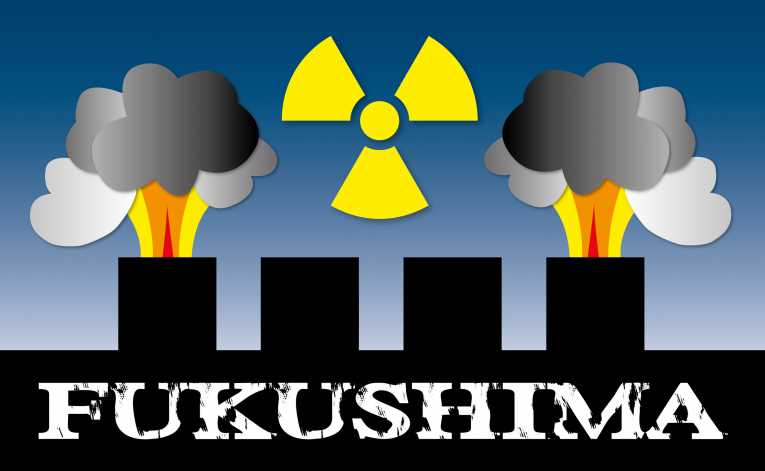
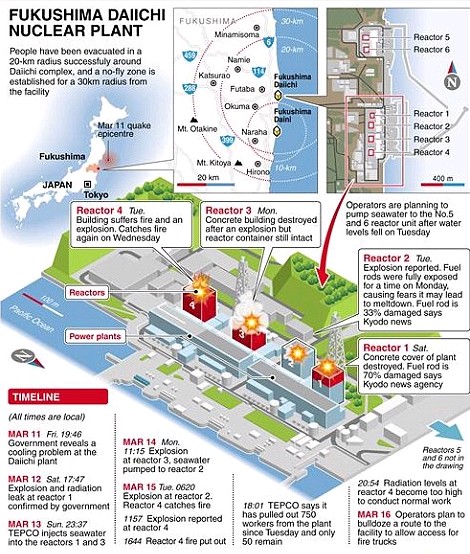

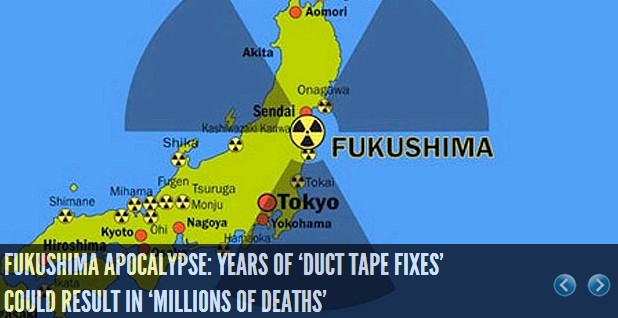
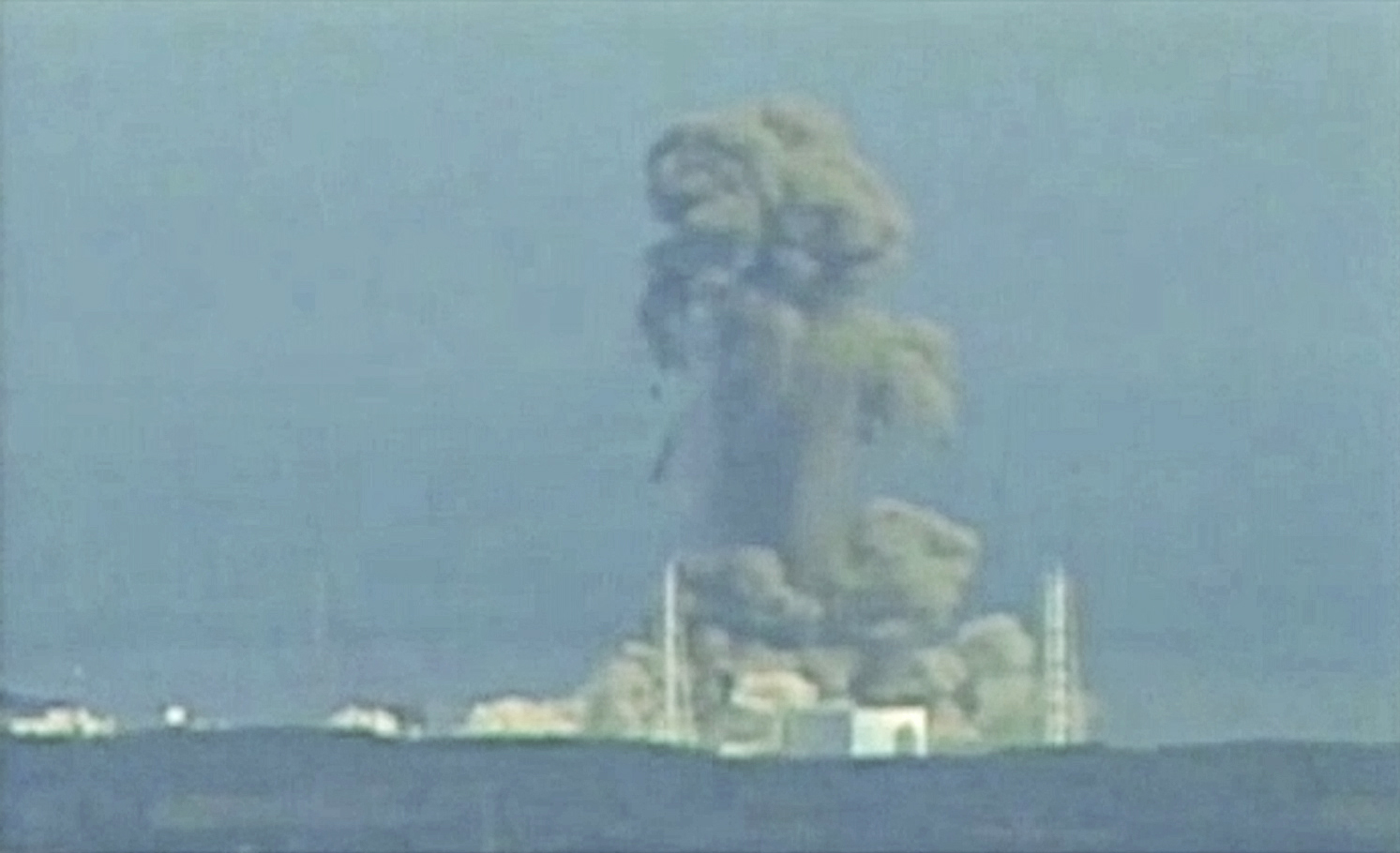
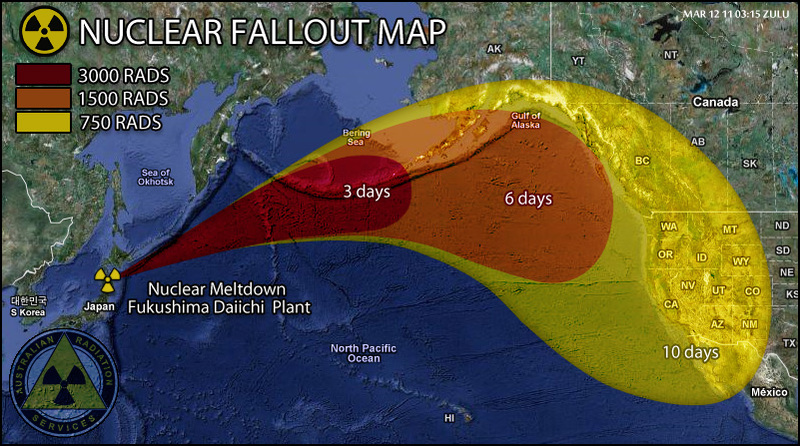





 Tuesday, August 27, 2013
Tuesday, August 27, 2013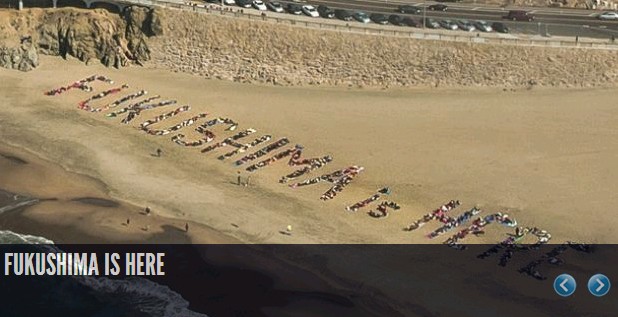

 Though the researchers involved with the work have been reluctant to pin
Fukushima as a potential cause -- National Geographic, which covered the study recently, did not even mention
Fukushima -- the timing of the discovery suggests that Fukushima is, perhaps, the cause. According to the
data, this sudden explosion in so-called "sea snot," which is the name given to the masses of dead sea
creatures that sink to the ocean floor as food, has skyrocketed since the Fukushima incident occurred.
Though the researchers involved with the work have been reluctant to pin
Fukushima as a potential cause -- National Geographic, which covered the study recently, did not even mention
Fukushima -- the timing of the discovery suggests that Fukushima is, perhaps, the cause. According to the
data, this sudden explosion in so-called "sea snot," which is the name given to the masses of dead sea
creatures that sink to the ocean floor as food, has skyrocketed since the Fukushima incident occurred.


